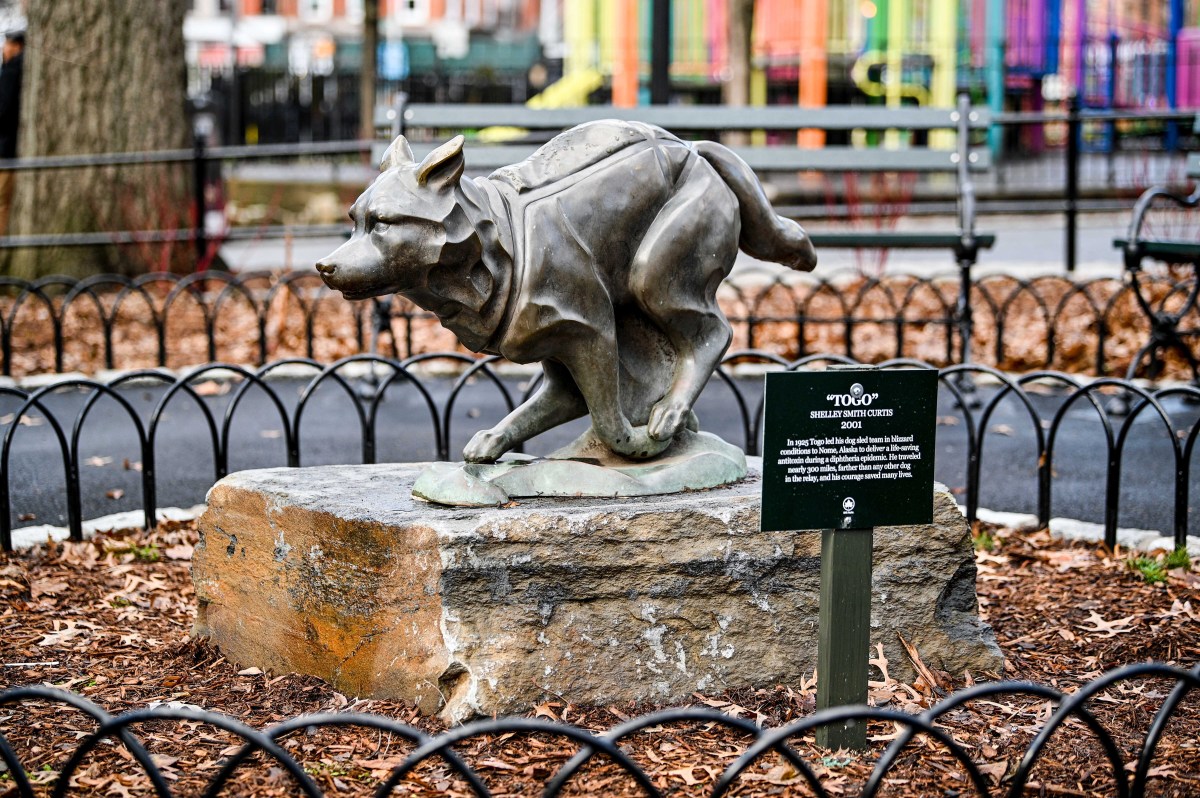And You Thought *We* Have Vaccine Issues?
A ruthless epidemic is slicing through town, creating an urgent health crisis. Citizens are spreading this plague unwittingly. Those who catch it complain of respiratory problems. Not long after, they begin dying—brutally and apart from their families. The local health care infrastructure bends and then breaks; those on the front lines act heroically but are quickly overwhelmed. Civic leaders call for a quarantine, which, while generally observed, is met with some resistance, as it shuts down commerce. Even shelter-in-place orders don’t repel this deadly blight.
Amid this distress comes a blast of hope: news that a serum—an antitoxin to neutralize the bacteria—is being produced and soon will be available in mass quantities. Homespun remedies have not worked; now the product of actual research and testing and science is available. But distribution is complicated, not least by a brutal winter, which complicates logistics. By the time the antidote can be delivered, who knows how high the death count will climb?

Venture back to the first two weeks of 1925, in the city of Nome, a remote Alaskan territory outpost on the southern shore of the Seward Peninsula, 160 miles from the Arctic Circle. A frontier town of 1,400, Nome sits closer to the Russian border than to the nearest Alaskan city. The only doctor in town examines a boy complaining of labored breathing and suspects tonsillitis—until the boy dies the next day. By which point other patients start to line up, describing similar symptoms. The doctor changes his diagnosis to diphtheria, a highly contagious bacterial infection that among Alaskan natives has an expected mortality rate of 100%.
By chance, that doctor ordered a diphtheria antitoxin serum one summer ago. But it hasn’t yet arrived, and the nearest supply is in Anchorage, 1,000 miles away. Reaching Nome is a challenge even in the most benign of times; now, in the guts of winter, it is nearly impossible. The harbor is iced in. Commercial airplanes are just coming into vogue, but those in the region have open cockpits, rendering them incapable of flight in subzero temperatures and whipping winds. The Alaska Railroad, recently christened, goes nowhere near Nome; the nearest train station is in Nenana, as far away as New York City is from Indianapolis.
The territory’s governor, Scott Bone, and the Board of Health hatch a plan: The serum will travel by train from Anchorage to Nenana. From there, a coordinated, around-the-clock relay team of the heartiest dogs and the heartiest men in Alaska will brave the cold and transport the antitoxin via sled, across tundra, frozen lakes and dense forests.
The volunteers arraying themselves along this route, awaiting their turn, are a motley crew of locals, Athabascan Indians and Inuit people, all familiar with the terrain and the weather. The diphtheria serum—unlike most COVID-19 vaccines, which must be preserved in cold—can be rendered ineffective by freezing temperatures, no small consideration in an Arctic climate with little daylight.
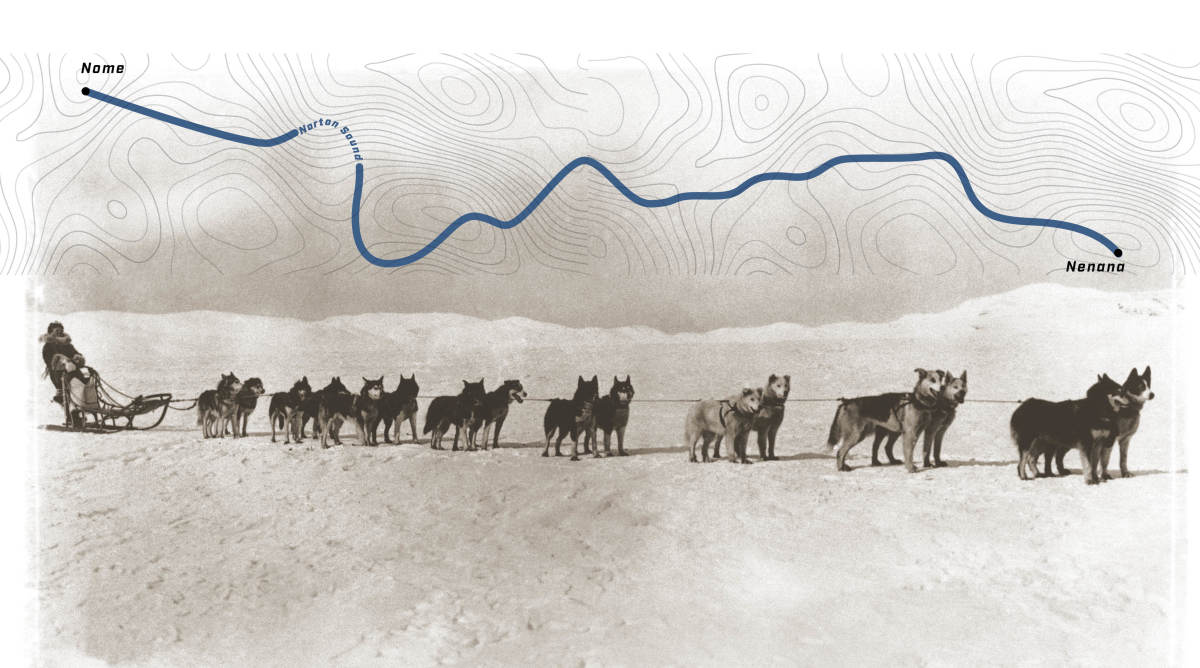
What would come to be known alternately as the Nome Serum Run of 1925 and the Great Race of Mercy marked one of the towering rescue efforts in American history, a feat of interspecies heroism that would captivate the country. In addition to saving lives, this rescue operation was an ideal episode—content!—for newspapers, as well as for the new medium of radio. This episodic drama unfolded across an exotic locale and featured colorful characters, a high-stakes crisis and an uncertain outcome. When it was all over, the story would be cemented as a chapter of Americana.
As successful, though, as that mission was, those who later told the tale were considerably less successful in apportioning proper credit. Too often, in nearly a century’s worth of retellings, the most heroic figures—a man and his dog—have gone overlooked.
Almost from birth, Leonhard Seppala was conditioned to harsh living. Born in 1877 in a small town in Norway, 600 miles north of the Arctic Circle, he was tasked with fishing and hunting while his father worked as a blacksmith. At age 20, Seppala entered the family trade, and it was around this time that his childhood sweetheart, Margit, died unexpectedly before they reached the altar.
Craving an escape from his grief, Seppala listened raptly when a friend—one of the so-called Three Lucky Swedes—returned from Alaska, newly rich. He’d found gold at Avil Creek, outside Nome, and become a prominent figure in the Alaskan Gold Rush. Why not come back with me? he asked.
With no good reason to stay, Seppala boarded a ship to New York, a train to Seattle and another vessel to Nome, where he went to work for the friend’s mining company. But there he found brutal work in brutal cold. Claim jumpers took particular advantage of immigrant miners.

Seppala never struck it big. He did, however, make good use of a skill he’d mastered in Norway, winning skiing contests for speed, endurance and jumping. Though Seppala stood only 5' 4", he was an exceptional athlete—sinewy-strong, relentless and tough. He prevailed in barroom wrestling matches against far bigger men and sometimes, for fun, walked down the streets of Nome on his hands. Far from home as he was, he made friends quickly. The pacing, climate and overall vibe of Alaska felt familiar.
In the early 1900s, Seppala joined a mining party sent to stake claims in a river basin so remote that the travelers had to be aided by sled dogs. And it was there that he was enchanted—not by gold, but by the “splendid” (his word) animals transporting him, the 120-pound mongrels pulling “loads that would have staggered ordinary dogs.”
Dog mushing—from the French marchons, or let’s march!—was essential for commerce in the region, but it also became a source of recreation, competition and, eventually, wagering. Sled dog racing’s status as sport had been made all but official in 1908 with the inaugural All Alaska Sweepstakes, a multiday derby tracing a 400-plus-mile route along the Bering Sea, starting in Nome. The first victory went to John Hegnes—like Seppala, a Norwegian ex-pat—in 119 hours and 15 minutes, but the real winners were the bettors who backed him. The Sweepstakes had turned into a gamblethon.
One year later a Russian fur trader drove a team of Siberian husky sled dogs across the Bering Strait and entered the race. The Siberians, who were about half the weight of their Alaskan counterparts, went off as 100-to-1 long shots—which nearly bankrupted the bookies when the team took second place.
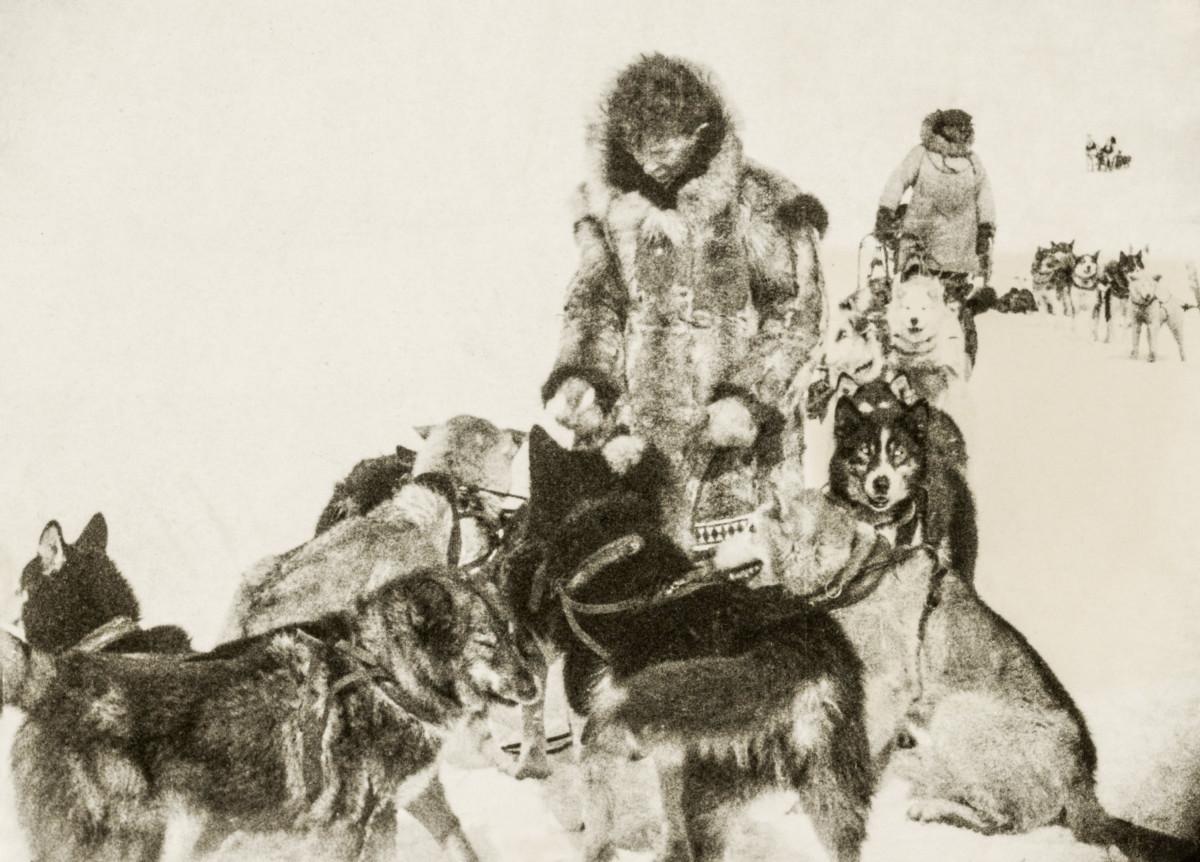
The Sweepstakes grew in popularity, with organizers boasting: “What bullfighting is to the Spaniard, horse-racing to the Kentuckian, a Marathon to the Greek . . . so is the annual All Alaska Sweepstakes Dog Race to the Alaskan.” Seppala, meanwhile, grew fascinated by the Siberians—like him, long on durability if short in stature—and began breeding and racing them. In 1914 he entered the Sweepstakes and nearly perished: When a blizzard hit, his team came within feet of going over a precipice along the Bering coast.
The following year, with clearer skies, Seppala and his Siberians won handily. But success was offset by tragedy. On Oct. 15, 1915, Leonhard’s kid brother Sigurd, who had also immigrated to Alaska, died in a cabin fire. Ten days later, Seppala’s coworker Olaf Kaasen, another native Norwegian, succumbed to injuries suffered in the same blaze.
Seppala funneled his grief into training. He defended his All Alaska title in 1916 and again in ’17, becoming a legend within the Alaskan territory, known for his sixth sense in managing his Siberians, over whom opponents claimed he had “hypnotic” control. As one historian put it: “He would make one cluck or one click and the dogs would dig into their harness and pull like they’ve never pulled before.”
As Nome’s epidemic raged in the first weeks of 1925, authorities mapped out the serum relay. It was by then an article of faith that Seppala would lead the effort. Though 47, he was still in peak physical condition, and he knew the terrain—and the dogs—better than anyone. The route between Nenana and Nome traced much of the same ground as the Sweepstakes. There were even considerations that he make the entire run himself: Nome to Nenana and back.
Ultimately, officials enlisted a larger cast. They telegrammed for volunteers, hoping to recruit an all-star team of sled drivers and dogs from the region. Some of those who signed up were Sweepstakes racers; others were trappers, guides and mailmen. The final plan included 150 dogs and 20 mushers arrayed between the station in Nenana and assorted towns and villages on the route to Nome. They would hand off the serum like a sort of pharmaceutical baton.
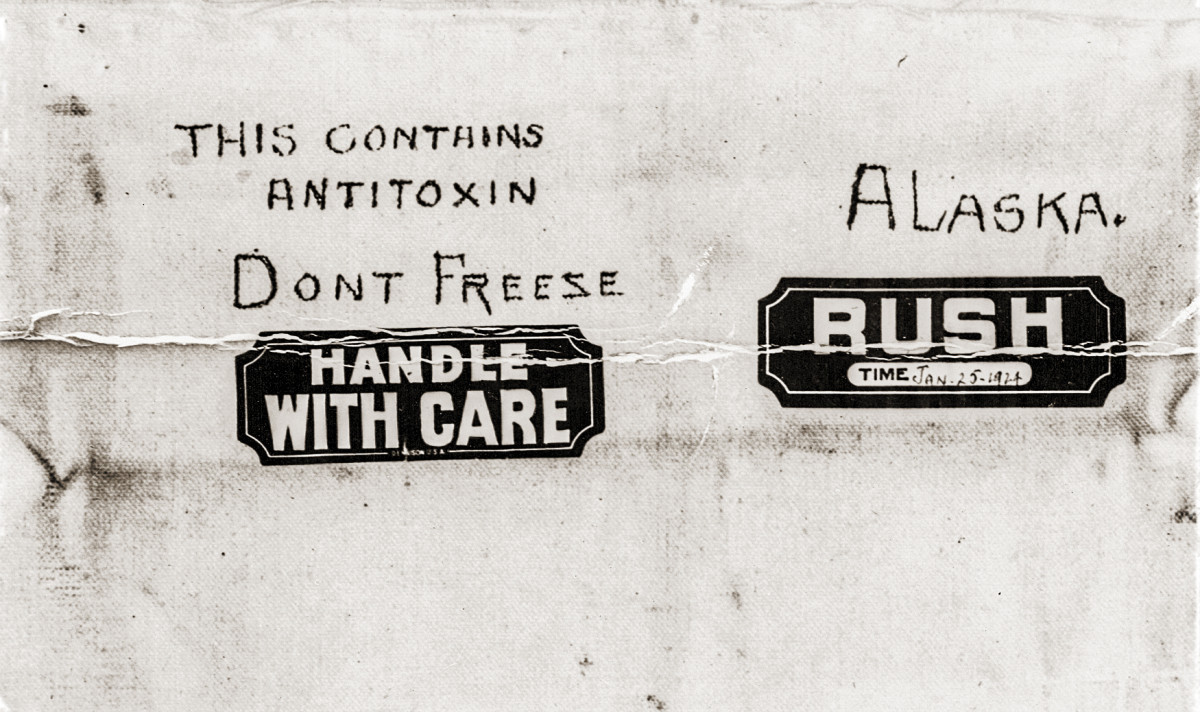
At the time, the fastest recorded trip from Nenana to Nome was nine days. With multiple drivers, maybe the relay would shave off a day or two. Initially, Seppala was slated to carry the serum for the final leg, but organizers reconsidered, deciding instead that he was the best musher for the most perilous stretch, crossing the frozen Norton Sound. He would be responsible for covering 91 of the 674 miles, almost twice the distance of anyone else.
Seppala would later say it never occurred to him that the team triumphantly delivering the serum into Nome would be accorded a disproportionate amount of fame. Even then, it wouldn’t have mattered; he was trying to save lives, not chase glory. Beyond pure altruism, he had an eight-year-old daughter, and children were particularly susceptible to diphtheria. It was all deeply personal.
On Jan. 27, a train from Anchorage arrived in Nenana and 300,000 units of serum—placed inside a 20-pound cylinder and wrapped in fur—were unloaded to (Wild) Bill Shannon for the first leg. With temperatures hovering around –40°, Shannon lost three of his Malamutes and his face was blackened by frostbite as he slogged through his 52 miles.
He was hardly alone in this distress. Another musher, Charlie Evans, got caught in an icy fog. At one point he and his team crossed a river, believing it had frozen over. But water had seeped through, and when several of Evans’s dogs collapsed from frostbite, he had no choice but to strap the serum into his sled and take the lead himself.
In Nome, Seppala started off toward Shaktoolik, 170 miles to the east. Temperatures had by then plummeted as low as –65°. The dog in the lead, though, was up for the challenge.
Born 12 years earlier, Togo, a gray and brown Siberian, was named after a Japanese admiral who served heroically in the Russo-Japanese War. Togo was so ill-behaved at first that Seppala gave him up for adoption. At his new home, though, Togo is said to have jumped through a glass window and found his way back to his original owner. Admiring both the loyalty and the resourcefulness, Seppala reclaimed the dog and started training him. While Togo never grew bigger than 50 pounds, he was durable and tough. His first day in a harness he ran 75 miles, a staggering distance for a young sled dog. He would soon become Seppala’s lead, logging as many as 4,000 miles in a single year.
For part of his relay leg, near an inlet of the Bering Sea, Seppala had a choice: He could go around Norton Sound, or he could take a dangerous 42-mile shortcut across it. And here he had some history weighing on him. According to the book The Cruelest Miles, by Gay and Laney Salisbury (which was indispensable in researching this story), Seppala and Togo had years earlier found themselves stranded on an ice floe as they tried crossing the sound. “When the wind shifted and pushed the ice closer to shore,” the Salisburys write, “Seppala tied a rope to Togo and threw the dog onto the main pack of ice so he could pull the two pieces together. Then the rope snapped and slipped into the frigid waters. . . . Togo dived into the water, struggled back up onto the land, rolled around until the rope was looped around his shoulders and pulled the ice floe close enough that his master could drive the rest of the team across.”
Seppala again took the risk. As the Salisburys recount: “In the dark, in 85-below temperatures with wind chill, Seppala could not see or hear the cracking ice, and was dependent on Togo.” Ultimately, they made it across to the stopping point on the north shore, an Inuit igloo, where Seppala fed his dogs, slept a few hours and, with temperatures at –30° and the storm still raging, finished his leg. The treacherous shortcut had saved at least a day.
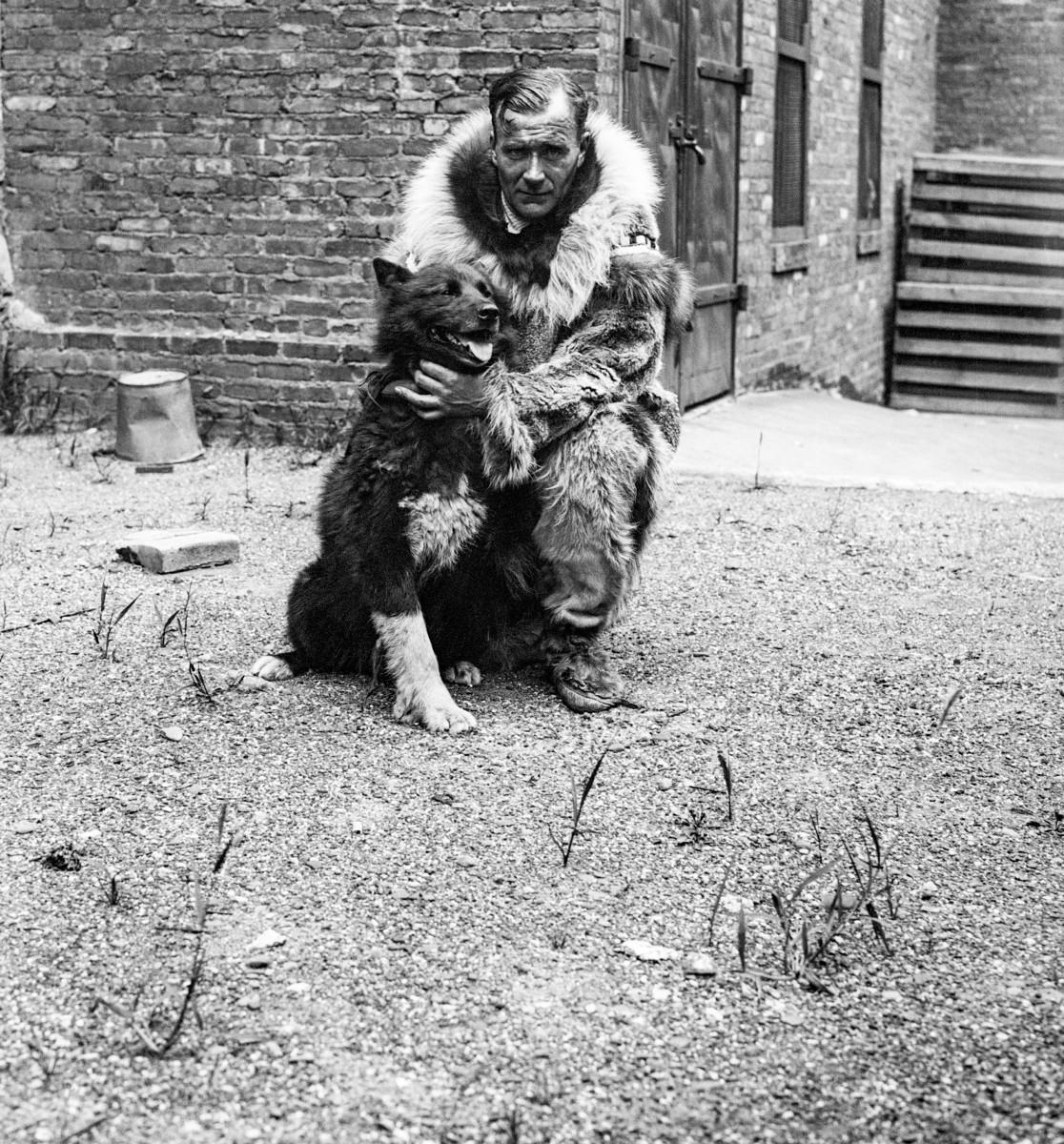
Charlie Olson took the serum and continued north, only to hit gusts that drove him off the trail. But he recovered and made it to a roadhouse, where he found the next driver, Gunnar Kaasen, who back in Nome worked under Seppala at the Pioneer Mining Company, and whose own younger brother Olaf had perished alongside Sigurd Seppala in the cabin fire a decade earlier. (The two were buried side by side.) A hulk of a man, with the build and stoic disposition of a lumberjack, Kaasen, then 40, drove a team that included Balto, a black Siberian with white paws, also bred by Leonhard Seppala but considered second-rate by his owner.
By this point, the relay—this elemental battle of man and dog vs. nature—had thoroughly captivated the Lower 48. A precursor to reality TV (and, for that matter, live sports), the operation was covered by newspapers and on radio services in the era’s version of real time. Among the breathless New York Times headlines: serum relief near for stricken nome. And blizzard delays nome relief dogs in the final dash.
During the 28-mile penultimate leg, the storm became so intense that Kaasen couldn’t see the dogs in front of him. At one point a gust of wind, estimated at 80 mph, collided with his sled, knocking the package of serum into a snowbank. Kaasen shed his gloves and pawed through the snow to recover the payload—which he did, but not before suffering a severe case of frostbite. He later recounted: “I couldn’t hear, couldn’t see, couldn’t breathe. . . . I felt as if the dogs and I were fighting all the devilish elements of the universe.”
Still, with Balto leading the way, Kaasen arrived at his transfer point ahead of schedule. He was exhausted and the cold had penetrated his multiple fur parkas but, he later explained, the next scheduled driver was asleep. Kaasen decided to take on the final leg, another 25 miles, himself. And so it was that around 5:30 a.m. on Feb. 2, Gunnar Kaasen arrived in Nome and completed the relay. With journalists and hand-crank cameras waiting, he staggered off his sled and walked immediately to acknowledge Balto. “Damn fine dog,” he said, before collapsing.
The collective crew of mushers had covered 674 miles in 127 hours and 30 minutes—five and a half days—a remarkable clip, especially considering the extreme conditions amid the coldest winter in decades. The serum was quickly distributed and administered. Innumerable lives were saved.
Predictably, Kaasen, having completed the equivalent of the anchor leg, was feted like a conquering hero, his picture gracing newspapers across the country. President Calvin Coolidge and the U.S. Senate commended him. After all, he had “brought it home,” as one telegraph dispatch put it. Kaasen was quick to acknowledge his lead animal—“It was Balto who led the way,” he told a reporter; “the credit is his”—and the Siberian instantly became America’s
favorite canine.
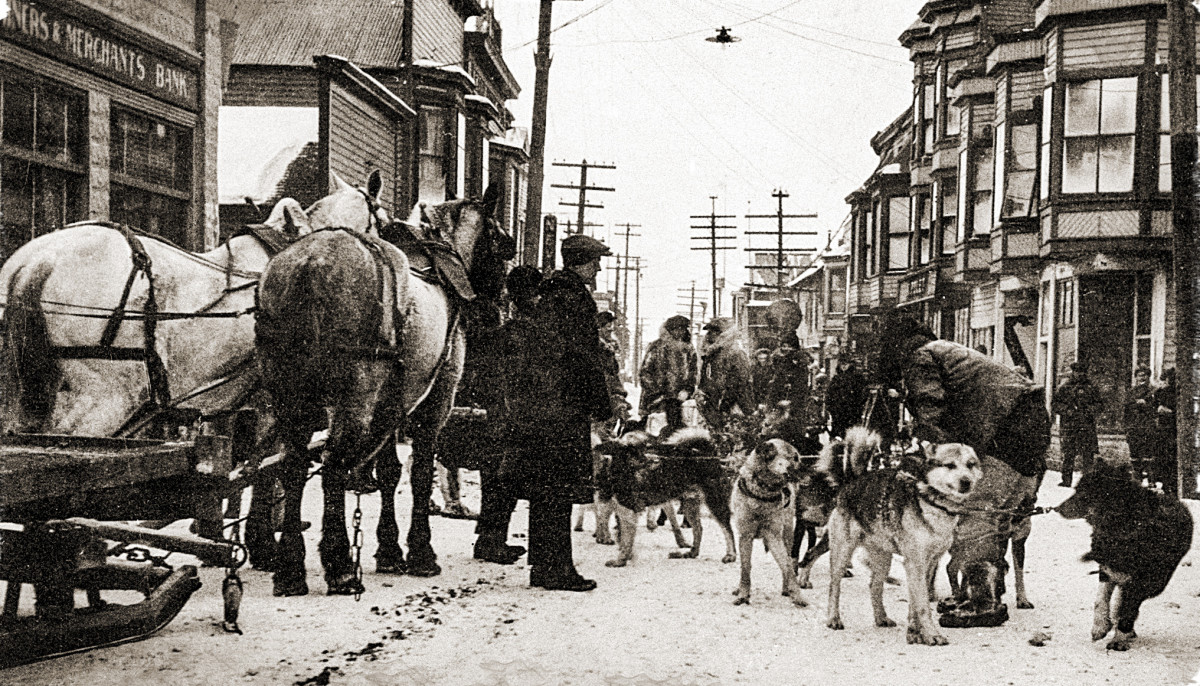
In reality, man and dog had benefitted largely from logistics. Many of the Native drivers and their animals quietly headed home to their villages after their runs. They were hundreds of miles from the journalists dispatched to Nome, overlooked by those writing the first draft of history. “They didn’t partake in the end glory, and everyone forgot about them,” says Laney Salisbury. “It was like,
We don’t want complexity. We need one hero, please.”
Balto benefited, too, from dumb luck. Because Kaasen’s other lead dog (also bred by Seppala) was named Fox—not only prosaic, but potentially confusing—Balto received a disproportionate measure of the acclaim, even compared with his own sledmates.
Seppala, meanwhile, returned to Nome exhausted. His distress was compounded by the fact that Togo temporarily went missing, having run off after a reindeer. If Seppala and Togo had traveled nearly twice the distance of Kaasen and Balto—90 miles (not counting the 170 they ventured to their starting point) compared with 53—and covered the most treacherous leg, these were details lost in the delirium.
Says Gay Salisbury: “The story had already heralded a winner by the time Seppala made the 100 miles home. It was too complicated to showcase 20 drivers and 150 dogs. The relay as a concept was not as exciting as ‘Balto crossed the finish line.’ ”
In the end an epidemic was snuffed out, and—instructive and relevant today, even at a fraction of the scale—life in Nome quickly snapped back to normal. Within three weeks the quarantine was lifted. Businesses and schools reopened. Citizens resumed their lives.
For Kaasen and Balto, however, there would be no normal. Driver and dog were flown to Seattle for a special ceremony. Then Hollywood came calling. Sol Lesser, a prominent film producer, wanted to make a movie about the Serum Run.
According to one account, Kaasen asked for Seppala’s blessing before accepting the movie deal. (It would mark one of the last few times that the men, once close, spoke.) Seppala assented, confident—naively, of course—that the Hollywood producers would demand accuracy and that Togo would get his due. Instead, the movie, Balto’s Race to Nome, only accelerated the legend of Kaasen’s lead dog, who had his own hotel suite during filming. After the movie’s release Kaasen and Balto toured the country with a vaudeville act, recounting their heroic story at every stop.
Kaasen, the archetypal stoic Scandinavian, was uncomfortable with the publicity. The rare times he granted interviews he seldom said more than a few words. Like most of the mushers, he was awarded a medal for heroism, but his ended up in a Seattle pawnshop. What’s more, his extended victory lap didn’t go over well in Nome, and his conduct during the relay was ultimately reconsidered. At one point he claimed that the driver to whom he was supposed to hand off the serum had been asleep; in another account he said the cabin had been unlit, leaving him to believe no one was there. More than one musher suspected that Kaasen simply understood the tricky thermodynamics of glory and realized the fame and admiration that would redound to the man who made the final handoff.
Near the end of 1925, when Kaasen stood in New York’s Central Park for the unveiling of a statue honoring Balto, Seppala abandoned the high road. If another man was getting disproportionate acclaim, so be it. But he wouldn’t watch Togo go unacknowledged. He sent word for Kaasen—still, technically, his employee at the mining company—to return to Nome. (Kaasen complied but, without the means to pay their passage, he left Balto and his other dogs with the vaudeville promoter.) As Seppala recalls in his memoir, Seppala: Alaskan Dog Driver, “I resented the statue to Balto, for if any dog deserved special mention, it was Togo.”
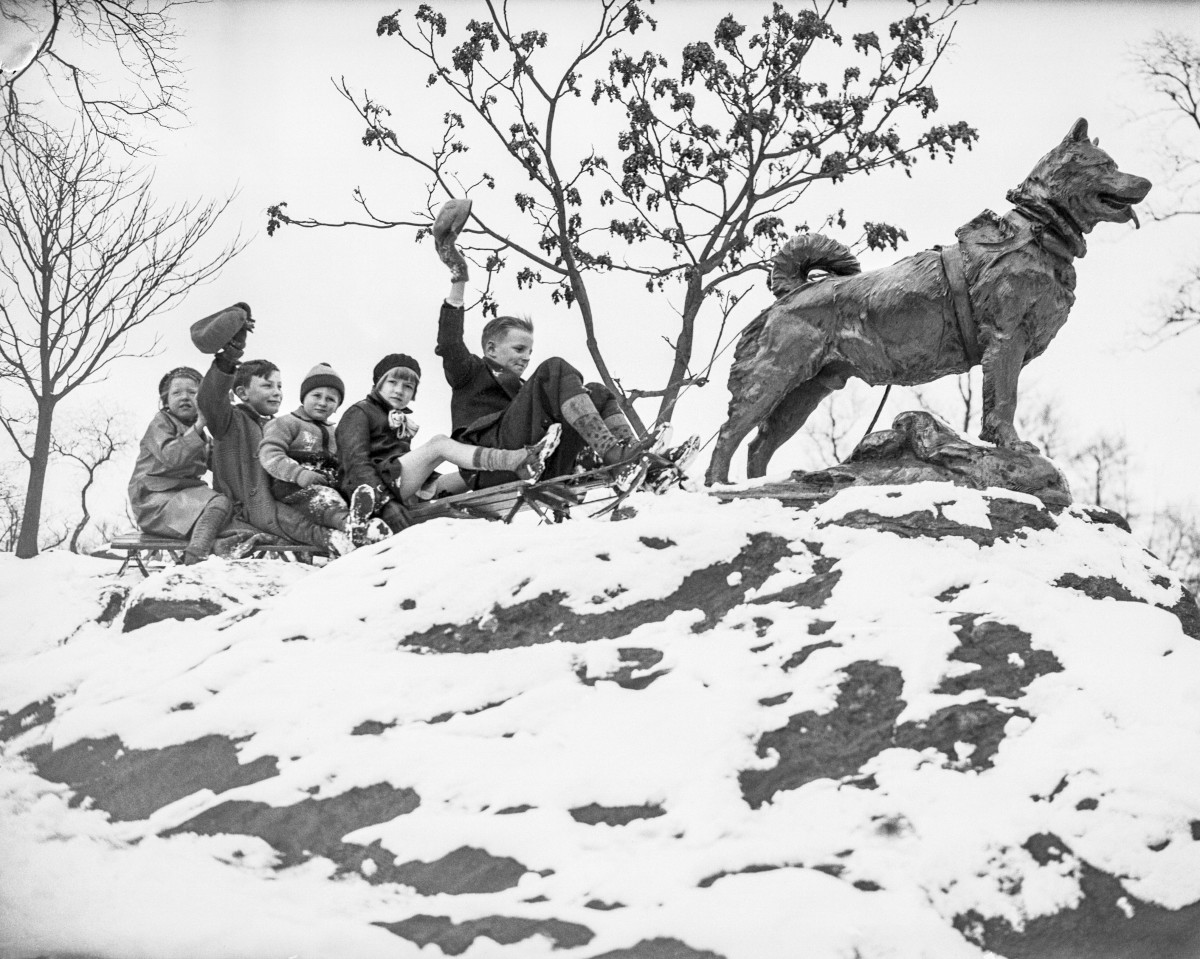
A different kind of Nome relay ensued: No sooner had Kaasen returned to Alaska than Seppala and Togo commenced a year-long U.S. victory lap of their own. They appeared at fairgrounds and at department stores; they were even featured in a national cigarette ad campaign. At Madison Square Garden, during halftime of a Rangers game, explorer Roald Amundsen awarded Togo a medal of honor. A book titled Togo’s Fireside Reflections was “autographed” by the subject via inked paw.
Seppala finished the tour in Poland Spring, Maine, where he raced and defeated a breeder of Chinook sled dogs. He took part in an Olympic demonstration race tied to the 1932 Lake Placid Winter Games and opened a Siberian husky kennel in Poland Spring—which is where he left Togo when he returned to Alaska. The quiet canine hero of the Nome diphtheria epidemic lived a cosseted existence before being euthanized on Dec. 5, 1929, at 16.
By the early 1930s, the Alaska Territory had changed. The attention brought by the Serum Run had the unintended effect of accelerating modernization. Soon, U.S. airlines were bidding on Alaskan routes. Telecom companies were installing lines at a rapid clip. The dogs that were so heroic in delivering a cure were no longer needed for transport. “If there had been the same [diphtheria crisis] in 1926,” says Gay Salisbury, “it would have played out very differently.”
What’s more, with Kaasen back in Alaska, interest in Balto and his crew diminished. The tour promoter who now owned the dogs created a shabby dime-a-look sideshow, chaining the animals to a stage, and the spectacle drew the attention of a Cleveland businessman, George Kimble. Appalled, Kimble complained to the promoter and was told that for $2,000 he could buy the entire team. Kimble took this appeal to the Cleveland Plain Dealer, which kicked off the 1920s equivalent of a viral GoFundMe campaign. Kennel clubs chipped in. Kids donated milk money. After barely a week, the goal was met and the dogs were transferred to Cleveland’s Brookside Zoo, where on Balto’s first day more than 15,000 visited his exhibit. When he died on March 14, 1933, at 14, it was a national news event. (The mounted body still remains on display at the Cleveland Museum of Natural History.) As recently as 1995, Steven Spielberg's Amblin Entertainment released an animated film, Balto—starring the unlikely trio of Kevin Bacon, Bridget Fonda and Phil Collins—that perpetuates his starring role in the serum saga.
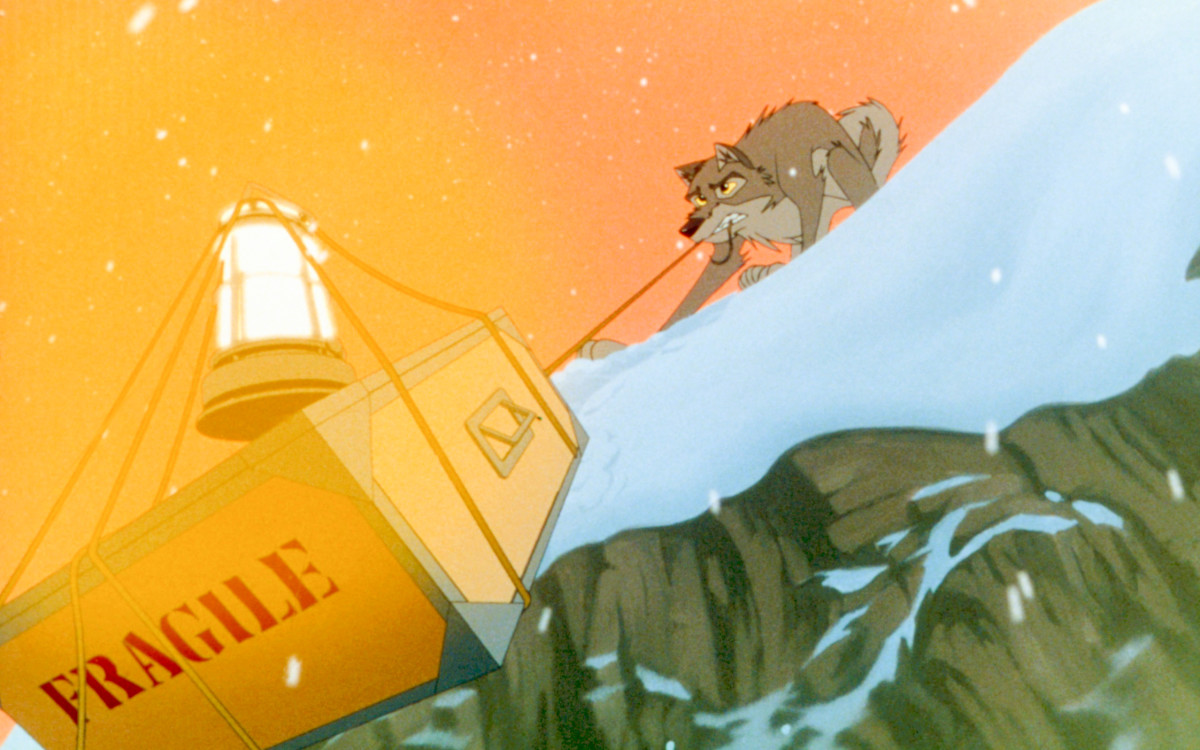
Over the years, though, Togo clawed back some of the glory that was rightfully his. In 2011, Time named him the most heroic animal of all time, noting rightly, “The dog that often gets credit for eventually saving [Nome] is Balto, but he just happened to run the last [53]-mile leg.” And last year Willem Dafoe starred as Seppala in Togo, which was among the first offerings on the Disney+ streaming service. (Seppala himself likely would have been pleased: Balto makes only a cameo.) Togo even got his own statue in New York, in ’01, at a playground on the Lower East Side.
Cementing sled dog racing’s place in the pantheon of revered sports, the Iditarod was christened in 1973, 14 years after Alaska was admitted as a state. Half a century later, mushers and their dogs still spend days tracing a trail through forests and mountain passes, finishing in Nome. And while that race was not—contrary to many reports—established to pay homage to the Serum Run, the relay of ’25 echoes prominently at today’s marquee mushing event, as do its two towering figures. Togo’s mounted body is on display at the Iditarod headquarters in Wasilla, and each year race veterinarians hand out the Leonhard Seppala Humanitarian award to “the musher who takes the best care of their dog team.”
In the late 1940s, Seppala settled in Seattle, and while he never repaired his friendship with Kaasen, he continued to breed Siberians, serving as a sort of wise, old man of Alaskan dog culture. He died in 1967, at 89, having lived an impossibly full life.
According to The Cruelest Miles, Seppala wrote this diary entry when was 81, decades after the Nome Serum Run, and long after the death of his prized lead dog: “When I come to the end of the trail, I feel that along with my many friends, Togo will be waiting, and I know that everything will be all right.”
